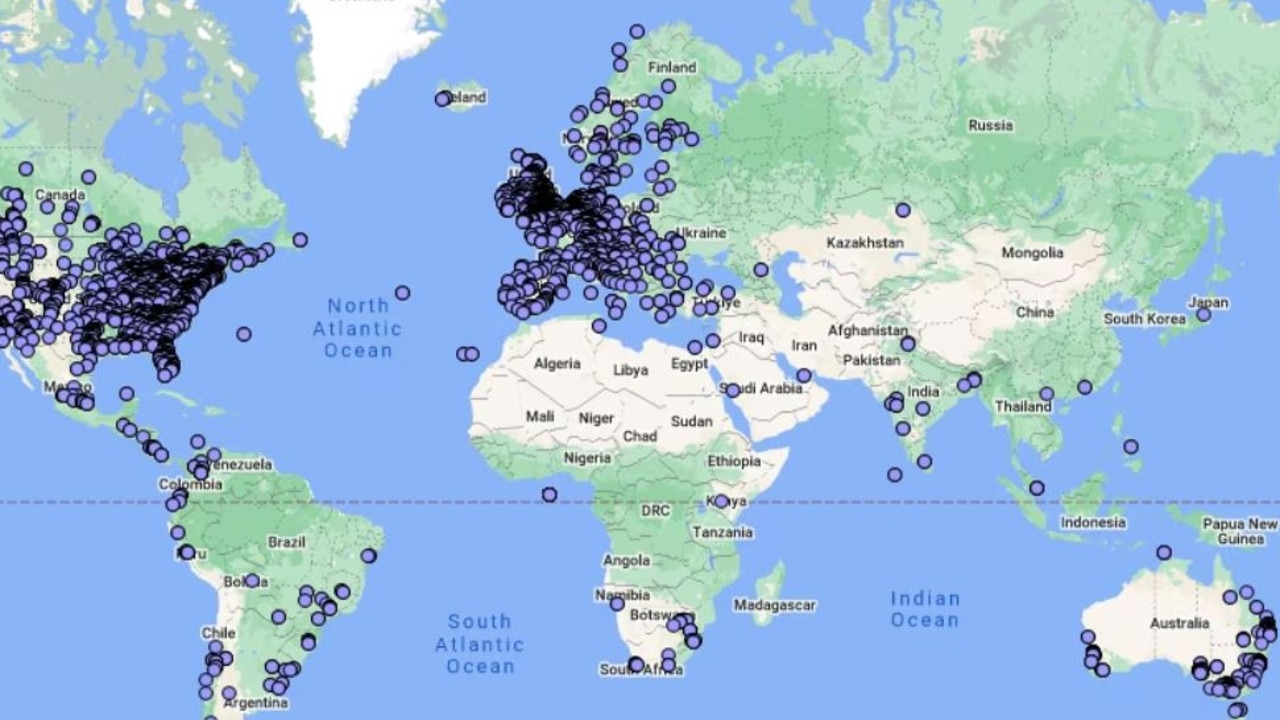6500 people worldwide claim to hear mysterious ‘hum’ noise
Thousands of people worldwide report hearing a bizarre “hum” noise — and as scientists scramble for answers, strange theories have emerged.

A weird “humming” noise has been reported by thousands of people worldwide with scientists scratching their heads, trying to solve the mystery.
“The Worldwide Hum” describes an unusual, unidentified low-frequency sound heard by people across the globe, including in Sydney and other major cities.
First recorded by scientists in 2012, the modern-day mystery has seen more than 6500 instances of the humming sound reported, with hundreds of new reports continually added monthly to an interactive user-generated map.
The sounds heard only by certain people is often described as a low rumbling of droning sound, with some comparing it to a car or truck engine idling outside your house or down the block.
People have reported “the hum” to be louder at night than during the day, as well as it being louder indoors than outdoors.

“For the past two years I’ve been hearing a low-pitched humming noise that seems to oscillate in intensity. I hear it most days and nights though occasionally it seems to take a day off,” a Melbourne resident wrote on Reddit.
“The best way I can describe it is like that low frequency that tingles your ears when a passenger jet flies overhead, that only just audible hum before you really hear the pitch of the engines and realise you’re hearing a plane,” they wrote.
“With my ears it registers more like a feeling than I’m sensing a sound and seems to be omnidirectional.
“I only hear it in Melbourne, and I mostly only hear it when I’m indoors, though I don’t hear it in every house. Sometimes it’s so intense it wakes me up at night.”
The Reddit user is one of the nearly 30 people in Melbourne who have marked their experience on the global map.
An investigation into the noise was conducted in NSW Waverley Council by the Environment Protection Authority (EPA) ten years ago, after numerous residents complained.
“Given this issue appears to still be a concern for some residents, the EPA will contact (Waverley) Council to see if they would like us to assist them in trying to identify the source,” a NSW EPA spokesperson told ABC News.
Facebook support groups have also been popping up, with people sharing their experiences online.
“It does make you feel like you’re going insane,” one person wrote.
“I hear it sometimes, one time it was like electricity shooting across my brain,” agreed another.
“Is this just tinnitus from everyone using headphones all the time?” a third person proposed.

Tinnitus is a symptom of an auditory system problem and is characterised by noises or ringing in your ears or head when no physical noise is present, affecting up to 20 per cent of Aussies to some degree in their lifetime.
The hum still remains a mystery, with no real explanation available at present.
The World Hum Map and Database project was started by Dr Glen MacPherson, who first heard the unusual sound while living on Canada’s Sunshine Coast.
“The first night in my house, the hum absolutely roared,” he toldthe ABC.
“It was absolutely loud enough to be a nuisance.”
The very first hum report dates back to 1970s England, dubbed the “Bristol hum”, when hundreds of people in the UK city of Bristol reported a strange buzzing noise.
After falling silent for decades, the low-level Bristol hum returned in 2016 before dissipating once more.
Various theories have emerged over the years, proposing a reason for the bizarre sound, including industrial plants, ocean waves, lightning strikes and mobile phone towers.
Over the 11 years of research Dr MacPherson has made some startling discoveries, disproving initial researchers.
“There’s no such thing as a hum hotspot,” Dr MacPherson said.
“Initial researchers were quite incorrect.”
Dr MacPherson believes the hum phenomenon is similar to tinnitus, with the sound or vibration coming from within the individual, rather than it being an outside sound.





